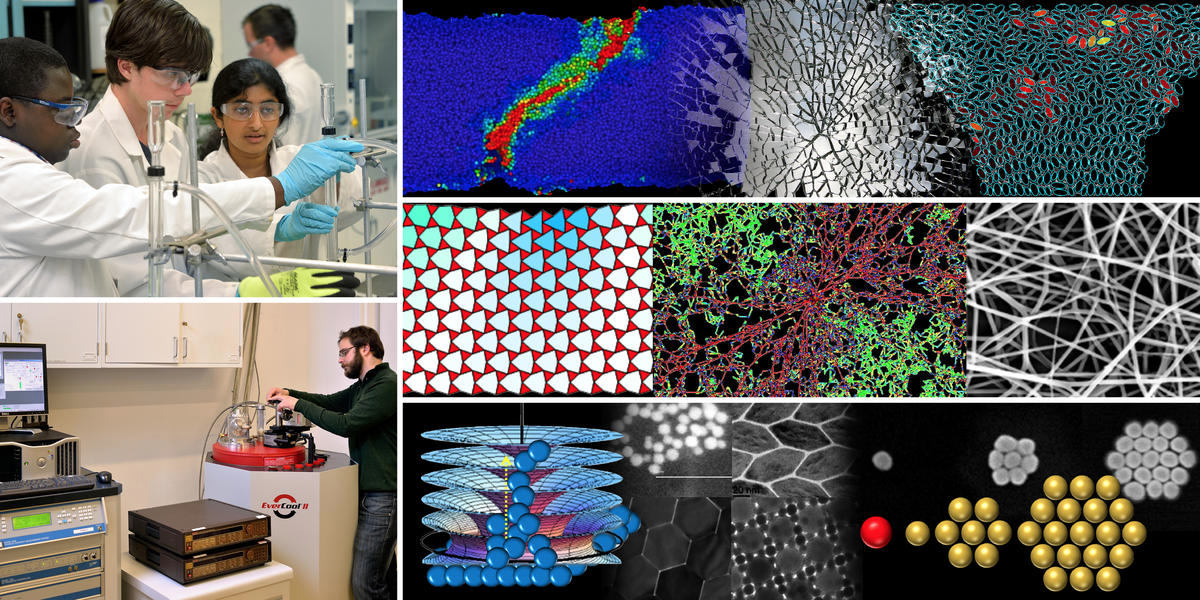Penn’s Laboratory for Research on the Structure of Matter Awarded $22.6 Million NSF Grant

The University of Pennsylvania’s Laboratory for Research on the Structure of Matter has been awarded a six-year, $22.6 million center grant from the National Science Foundation to support LRSM’s work in cutting-edge materials.
The LRSM has been an academic center for interdisciplinary materials research since it was founded in 1961, and it has hosted an NSF Materials Research Science and Engineering Center since 1996. The new MRSEC, one of eight selected nationwide, provides crucial support for LRSM’s education and outreach missions, its shared experimental facilities, as well as its research aims in three new areas.
“Our research projects identify and tackle big, new problems in materials science,” said Arjun Yodh, James M. Skinner Professor of Science in the Department of Physics and Astronomy in Penn’s School of Arts and Sciences and director of the LRSM. “These problems are generally multi-faceted and are too difficult for individuals or small teams to solve. Our new activities will require collaborations between chemists; physicists; chemical, electrical and mechanical engineers; materials scientists; bioengineers; biologists; and medical researchers.”
To tackle such complex problems, MRSEC members are organized into Interdisciplinary Research Groups. The newly awarded Penn MRSEC has three such groups, the maximum permitted by NSF, which draw faculty from nine departments in Penn’s School of Arts & Sciences, School of Engineering and Applied Science and Perelman School of Medicine.
The first group, Rearrangements & Softness in Disordered Solids, is led by Douglas Durian of the Department of Physics and Astronomy and Paulo Arratia of the Department of Mechanical Engineering and Applied Mechanics.
According to the researchers, solids with disordered arrangements of atoms, molecules, nanoparticles, colloids and grains cannot be deformed significantly before failing, in contrast to crystals like metals. This limits widespread application. Dropping a smart phone, for example, may dent the metal case but shatter the glass screen. In developing strategies to enhance toughness in disordered solids, the team aims to generate a fundamental understanding of how rearrangements of the constituent particles grow and evolve under large deformation. To this end, the team experiments with materials across many length scales from atoms to nanoparticles to grains and benefits from close coupling of experiment, simulation and theory.
The second group, Structural Chemo-Mechanics of Fibrous Materials, led by Paul Janmey of the Department of Physiology and Vivek Shenoy of the Department of Materials Science and Engineering aims to create a new field of network chemo-mechanics by understanding and harnessing the structural, chemical, and mechanical complexity inherent in fibrous networks.
Fibrous networks are ubiquitous in biology but are underexplored in materials science. According to the researchers, fibrous networks are like rubber was in the 1940s: the components are known but not the rules of behavior. The team will draw on faculty expertise in network synthesis and design, protein chemistry, rheology and imaging and theory and simulation to synthesize materials that activate chemical reactions via local strain and stress and that self-reinforce before breaking. In the process, the group will lay foundations for advanced fibers, adhesives, elastomers, textiles and scaffolds for tissue repair and regeneration.
The third group, Pluperfect Nanocrystal Architectures, led by Cherie Kagan of the Department of Electrical Systems Engineering and Randall Kamien of the Department of Physics and Astronomy, arose organically from highly successful nanocrystal and liquid crystal communities working within the LRSM. Together the group aims to make assemblies of nanocrystals that break from structural periodicity in unique ways by organizing nanocrystals into architectures on hard (fabricated) and in soft (reconfigurable) materials that break from structural periodicity to impart novel optical and magnetic response.
The nanocrystal research will lay foundation for applications such as optical conversion layers for energy, communication and sensing devices. The soft reconfigurable architectures based on nanocrystals and liquid crystals could lead to novel materials that are responsive to electric and magnetic fields.
In addition to research excellence, the LRSM was also awarded the MRSEC because of its innovative education and outreach activity.
“A crucial feature of our center is a remarkable educational and outreach program,” Yodh said. “Besides the obvious interactions with graduate students and post-docs, through research, we connect with area K-12 students and their teachers, undergraduates, local colleges, the general public and even universities far from Penn, as we do through our partnership with the University of Puerto Rico. The MRSEC support is vital for generating student interest, for taking them to the next level, and for promoting diversity in science and technology at all levels.”
Originally published at https://news.upenn.edu/news/penns-laboratory-research-structure-matter-awarded-226-million-nsf-grant.
